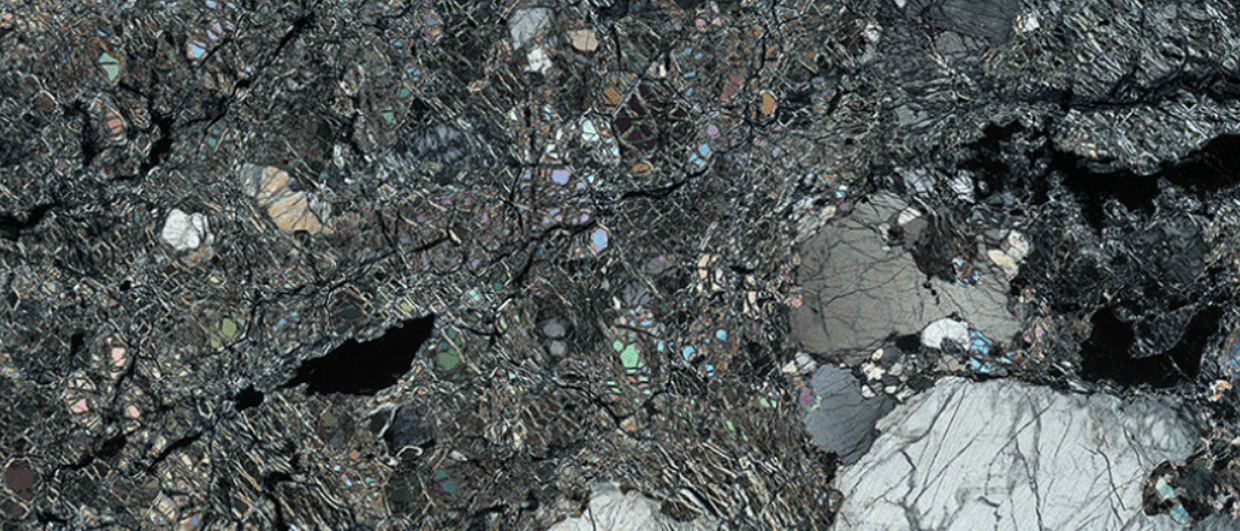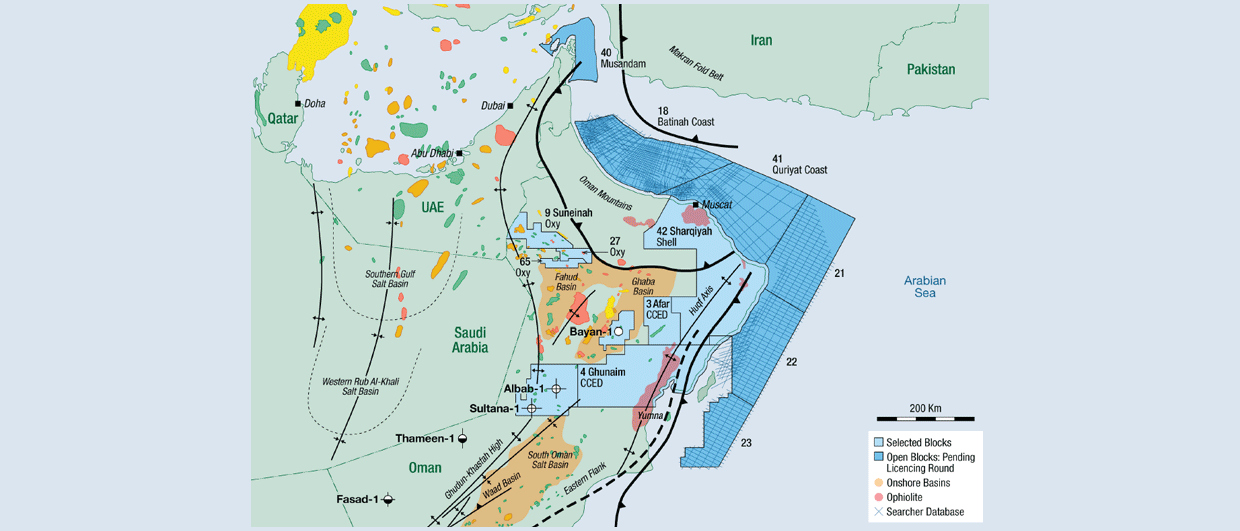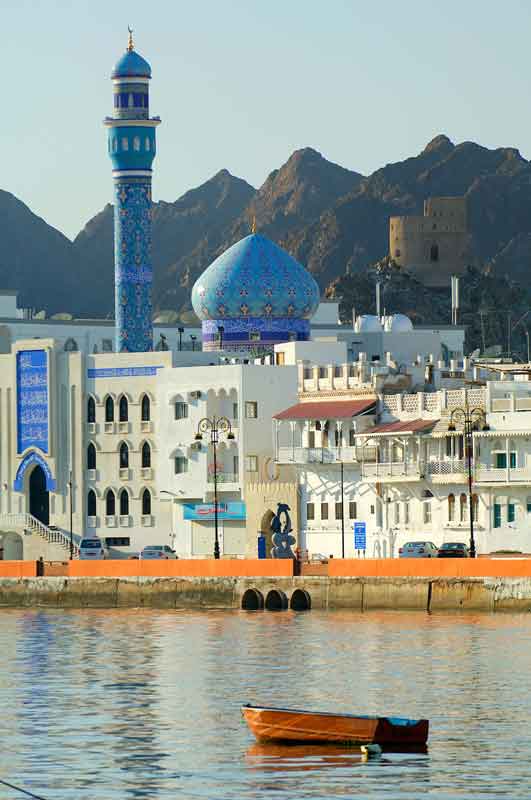
Strategic Position
There has probably been a settlement on the north-east coast of Oman in the region of Muscat for at least 2,000 years, with the Greek geographer Ptolemy mentioning a ‘concealed harbour’ in the area in the 2nd century AD. It certainly possesses a matchless and vital strategic position, overlooking as it does the Gulf of Oman, which leads eastwards towards the Indian Ocean, and westwards to the Straits of Hormuz, the narrow entrance to the Persian Gulf. The sea is ever-present and of great importance to the city – in fact some scholars claim that the name Muscat comes from an Arabic word for an anchorage, while ‘Oman’ and the country’s old Sumerian name Magan both mean sea-people in Arabic.
The first settlers were probably Yemenis, who approached the inviting sheltered harbour from the sea, and the town was one of the first places in the Arabian Peninsula to convert to Islam, in the 7th century. It became a thriving trade centre, with Omani sailors travelling particularly to India, which attracted the attention of the Portuguese, who conquered the town in the early 16th century in a bid to protect their own trade routes east. They fortified the harbour and were not overthrown until 1650, but the city then fell to the Ottoman Turks, until the Omanis, led by Sultan Ahmad ibn Sa’id, a direct ancestor of the present Sultan, regained control in 1741.This was the start of a golden age for Muscat, which became the capital of Oman in 1793, as the country grew into the dominant economic and naval force in the western Indian Ocean and the Gulf, with influence extending from India all the way to Zanzibar in East Africa. A huge range of commodities were traded, from silk worms, pearls, spices and sandalwood to horses, sheep and even ivory.
Over the years continuous infighting between members of the ruling family, religious leaders and local chiefs led to gradual neglect and economic stagnation, until by the outbreak of the First World War, Muscat needed a contingent of troops from the Indian Army to protect it from attack by local tribesmen. This situation was finally resolved in 1959, when the last Ibadi imam was evicted from the country by Sultan Said bin Taimur. Under his rule the country remained steadfastly guarded from the modern world, with very few roads or cars and the gates into Muscat locked every evening at sunset, until 1970, when his son, the present ruler Sultan Qaboos, took over after a palace coup.
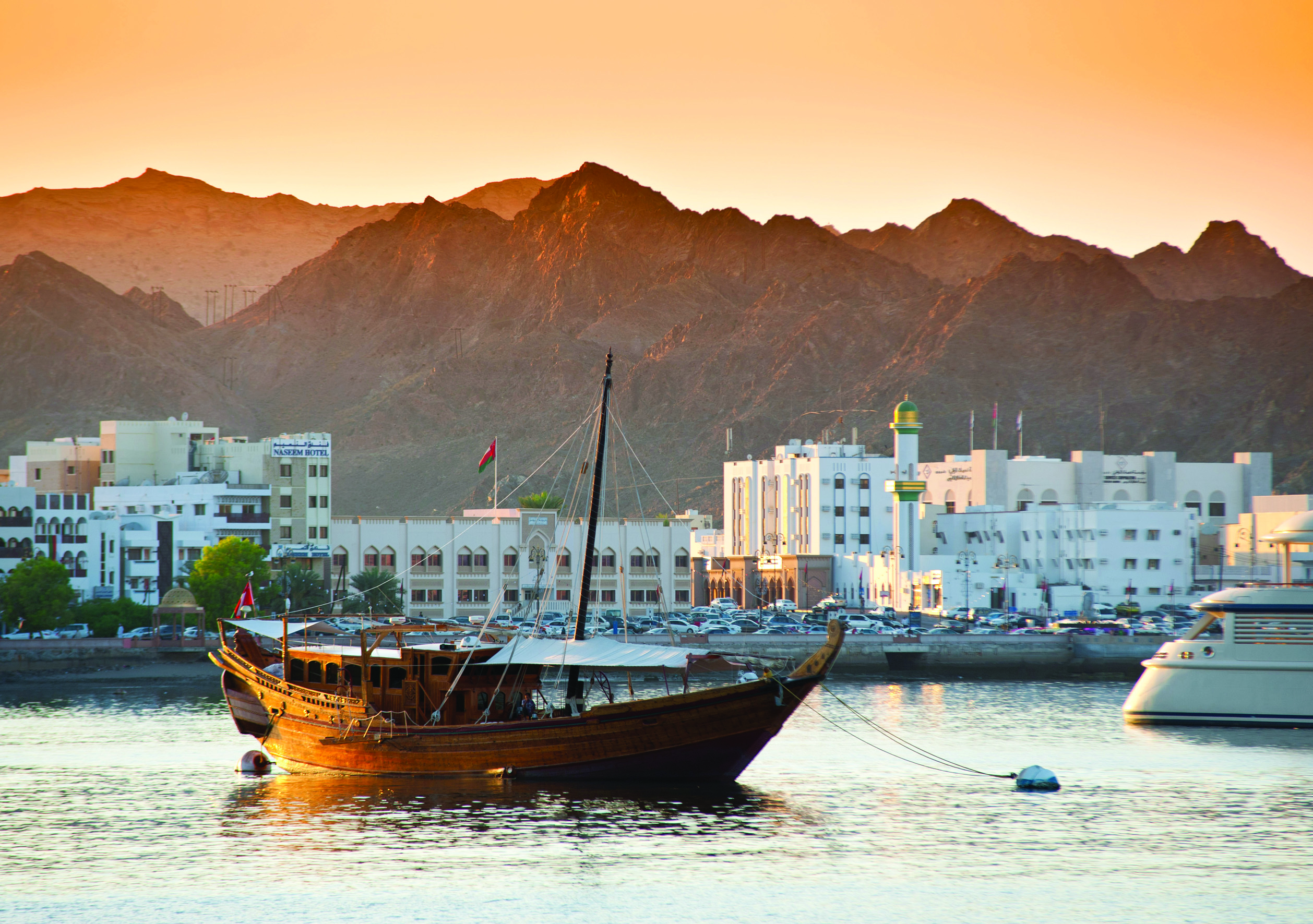
Unique Heritage
His bid for power pledging ‘a new dawn on Muscat’ was given impetus by the promise of oil wealth for Oman. Despite the previous Sultan’s reluctance to move into the 20th century, the doors had not been completely closed. There had been a few tentative exploratory expeditions as early as 1925, although their attempts were somewhat hindered by the ‘independent spirit of the inhabitants’! The first well was drilled in the 1950s, and commercial quantities of oil were finally found in 1964 (see GEO ExPro Vol. 9, No.1). The Government of Oman acquired a 60% stake in Petroleum Directorate Oman (PDO), which is still the primary exploration company in Oman, in 1974, with Shell as the main partner.
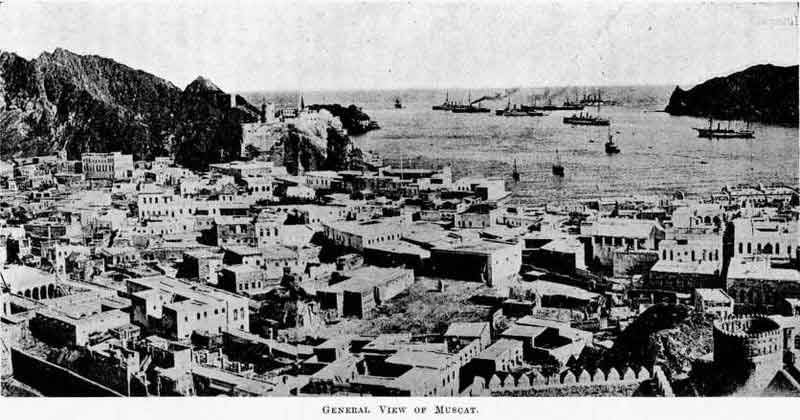
Although relatively modest in comparison with much of the Arabian Gulf, the resulting oil revenues have allowed Muscat and Oman to gradually catch up with the modern world, albeit gradually and in a distinctively Omani manner. Although now equipped with the trappings of the 21st century, such as a major port and an international airport, as well as designer outlets, five star hotels and fast water sports, Muscat still retains a delightfully old-fashioned atmosphere, where one feels that the inhabitants have time to sit and watch the world go by. The sights, sounds and smells of the Old Town souks, lying within the 500-yearold city walls, seem not to have changed for decades. Although Muscat is now a tourist destination, the traditional dhows in the harbours, dwarfed by oil tankers and cruise liners, are a reminder of the seagoing people who created this proud nation and unique culture and heritage.



